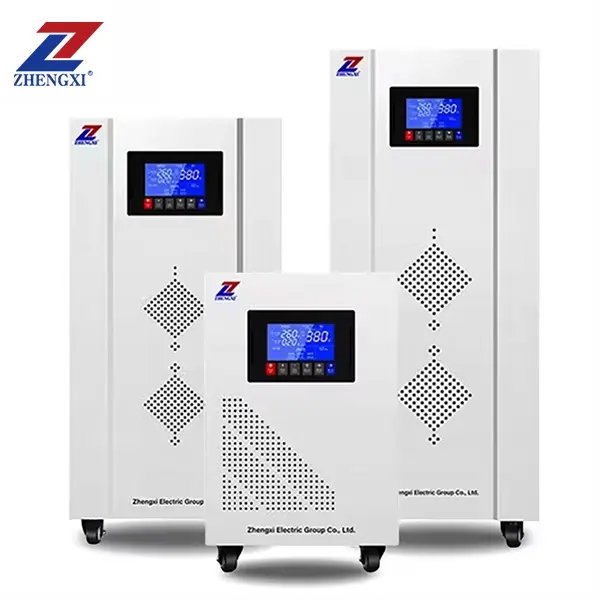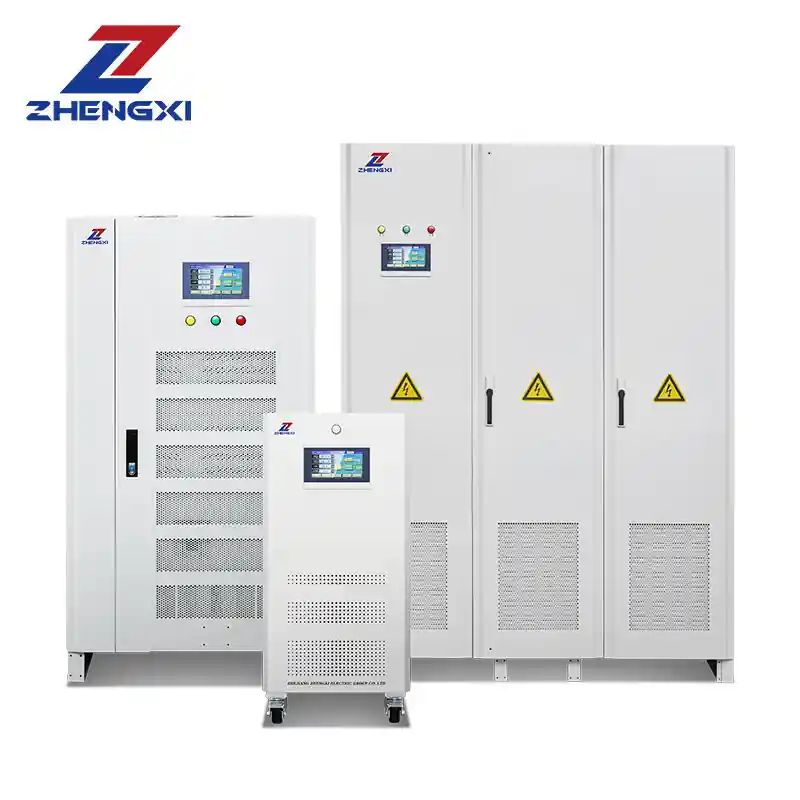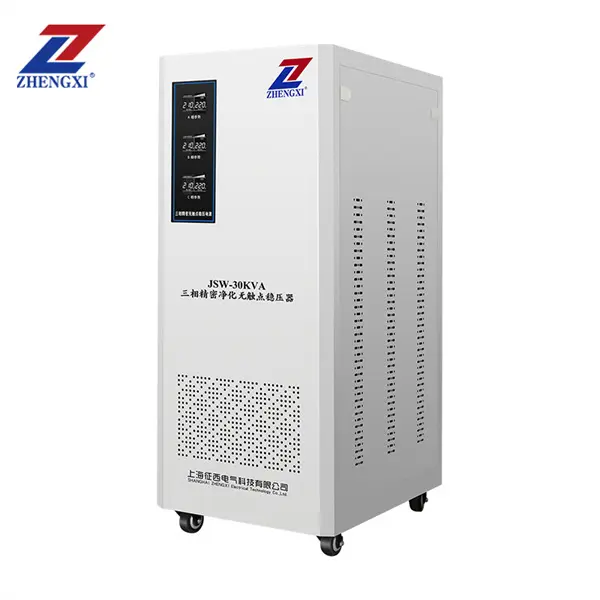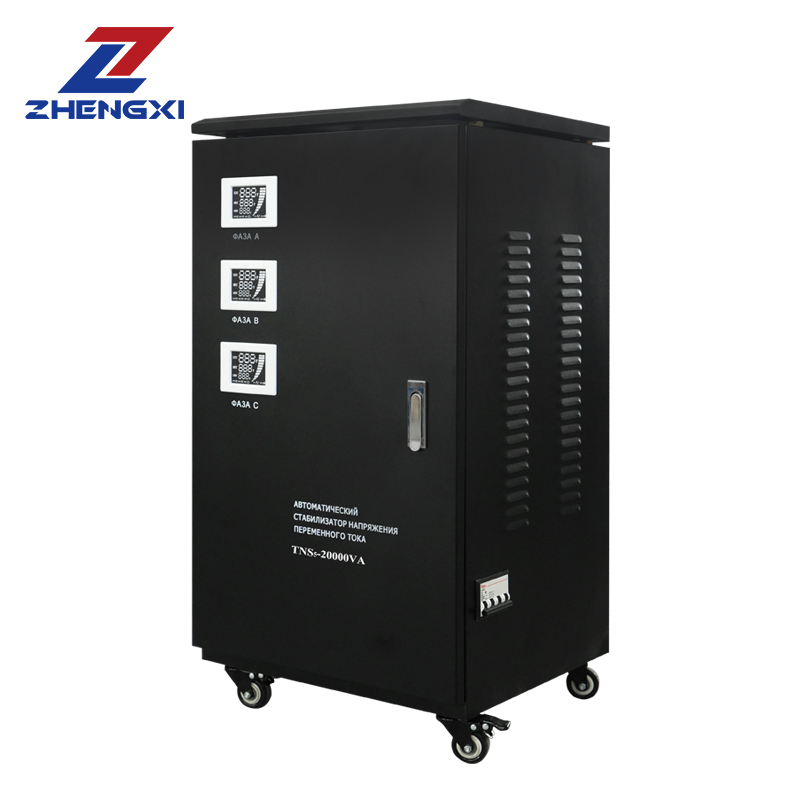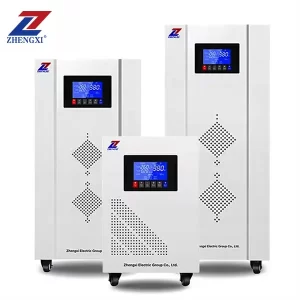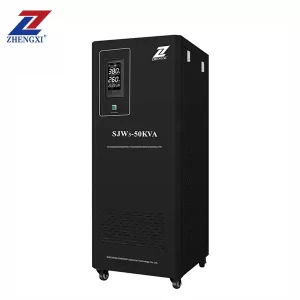In modern high-rise and commercial buildings, elevators (lifts) are the circulatory system of occupant movement. Any power quality issue directly translates into costly malfunctions, unhappy tenants, and—even worse—safety hazards. A 3-phase voltage stabilizer for lift acts as your last line of defense against the grid’s voltage swings, ensuring every ride is smooth, precise, and uninterrupted.
Why Elevators Demand Stable 3-Phase Power
Elevator drive systems differ greatly from typical single-phase appliances:
- High Torque Motors
- Elevators rely on 3-phase induction or synchronous motors requiring steady voltage to develop consistent torque.
- Overvoltage → overheating, insulation damage; undervoltage → excessive current draw, thermal stress.
- Sensitive Control Electronics
- VFDs (Variable Frequency Drives), PLCs, sensors, and leveling circuits reset or fail under sags/surges.
- A single voltage dip can freeze the car between floors or mislevel the platform.
- Passenger Comfort & Safety
- Voltage instability yields jerky starts/stops, uneven leveling, and unexpected stops—frustrating and potentially dangerous.
- Maintenance & Lifecycle Costs
- Motors, bearings, control boards, and gearboxes wear out faster without voltage regulation, driving up repair bills and unplanned downtime.
- Regulatory & Liability Risks
- In many regions, elevator performance standards (e.g. EN 81, ASME A17.1) implicitly assume reliable power. Outages or mis-operations can trigger fines or civil claims.
How a 3-Phase Voltage Stabilizer Works
A lift-grade stabilizer sits between incoming power (L1, L2, L3) and the elevator’s motor/control panel, continuously:
- Sensing — Measures each phase in real time.
- Analyzing — Compares against preset nominal voltage (380 V, 400 V, 415 V).
- Correcting — Applies one of three technologies:
- Solid-State Tap-Changing (electronic relays/thyristors): Fast (<10 ms), high efficiency (>97%), no moving parts.
- Ferroresonant (CVT): Excellent surge suppression, inherent current limiting, bulkier and lower off-load efficiency.
- Servo-Motor Driven: Analog precision, wide range (±20 %+), periodic brush maintenance required.
- Protecting — Builds in MOV surge arrestors, over/under-voltage cut-outs, phase failure and thermal overload protection.
Key Selection Criteria
When specifying your stabilizer, consider:
| Factor | Recommendation |
|---|---|
| Power Rating (kVA) | Sum motor, VFD, lighting, ventilation → Add 20 % safety margin. |
| Input Range | Match local grid swings (±15 %, ±20 %, ±30 %). |
| Output Accuracy | Look for ±1 % or better to maintain VFD performance. |
| Correction Tech | Solid-state for most lifts; CVT for high-surge areas; servo for extreme ranges. |
| Response Time | ≤10 ms ideal; servo types ~20–50 ms acceptable. |
| Protection Suite | Surge (MOV), UV/OV trip, phase failure, short-circuit (MCCB). |
| Efficiency | ≥95 % to reduce heat and operating costs. |
| Environment & IP Rating | Verify humidity, temperature, dust/water ingress specs. |
| Compliance & Warranty | CE, UL, RoHS, IEC; minimum 12–24 month parts & labor warranty. |
| Remote Monitoring | RS-485/Modbus optional for proactive maintenance. |
Tangible Benefits for Building Managers
- Extended Equipment Life
Less thermal cycling on motors/boards → fewer rebuilds. - Maximized Uptime
Drastically lower incidents of elevator “freezes” or emergency recalls. - Enhanced Safety & Comfort
Precise leveling, smooth accelerations → better tenant satisfaction. - Lower Total Cost of Ownership
Reduced emergency call-outs, spare-parts consumption, and downtime penalties. - Regulatory Peace of Mind
Meets or exceeds power-quality expectations in most elevator codes.
Installation & Maintenance Best Practices
- Qualified Electricians Only
Ensure compliance with NFPA 70, EN 61439, local lift codes. - Optimal Location
Near machine room main distribution board; maintain 20 cm clearance and airflow. - Routine Checks
- Solid-state: Inspect vents, tighten terminals.
- Servo: Add brush inspection to schedule.
- Commissioning Tests
Verify cut-out setpoints, alarm functions, and remote-monitoring link. - Documentation
Keep wiring diagrams, test reports, and vendor certificates on file.
FAQs
Q1: Can I use a single-phase stabilizer on a small residential elevator?
A: No—residential lifts still draw 3-phase power for balanced motor loading. Dimensional single-phase units won’t meet torque or safety requirements.
Q2: How often should I test my stabilizer’s protective relays?
A: Annually, or per manufacturer’s recommendation, aligning with your building’s lift safety inspection cycle.
Q3: Will a stabilizer protect against lightning strikes?
A: Only partially. Integrated MOVs handle transient spikes, but you’ll need a separate lightning arrestor for full lightning protection.
Call to Action
Ready to safeguard your elevators with SUNWAY’s range of 3-phase voltage stabilizers?
- Get a Customized Quote → ☑ Contact our power experts
- Download Spec Sheet → ☑ 3-Phase Stabilizer PDF
- See Case Studies → ☑ Commercial High-Rise Successes
By following today’s best practices and choosing the right 3-phase voltage stabilizer for lift, you’ll not only protect critical assets but also elevate safety, performance, and tenant satisfaction. Don’t let unstable power be the weak link—partner with SUNWAY for reliable, high-precision voltage regulation tailored to your building’s needs.

